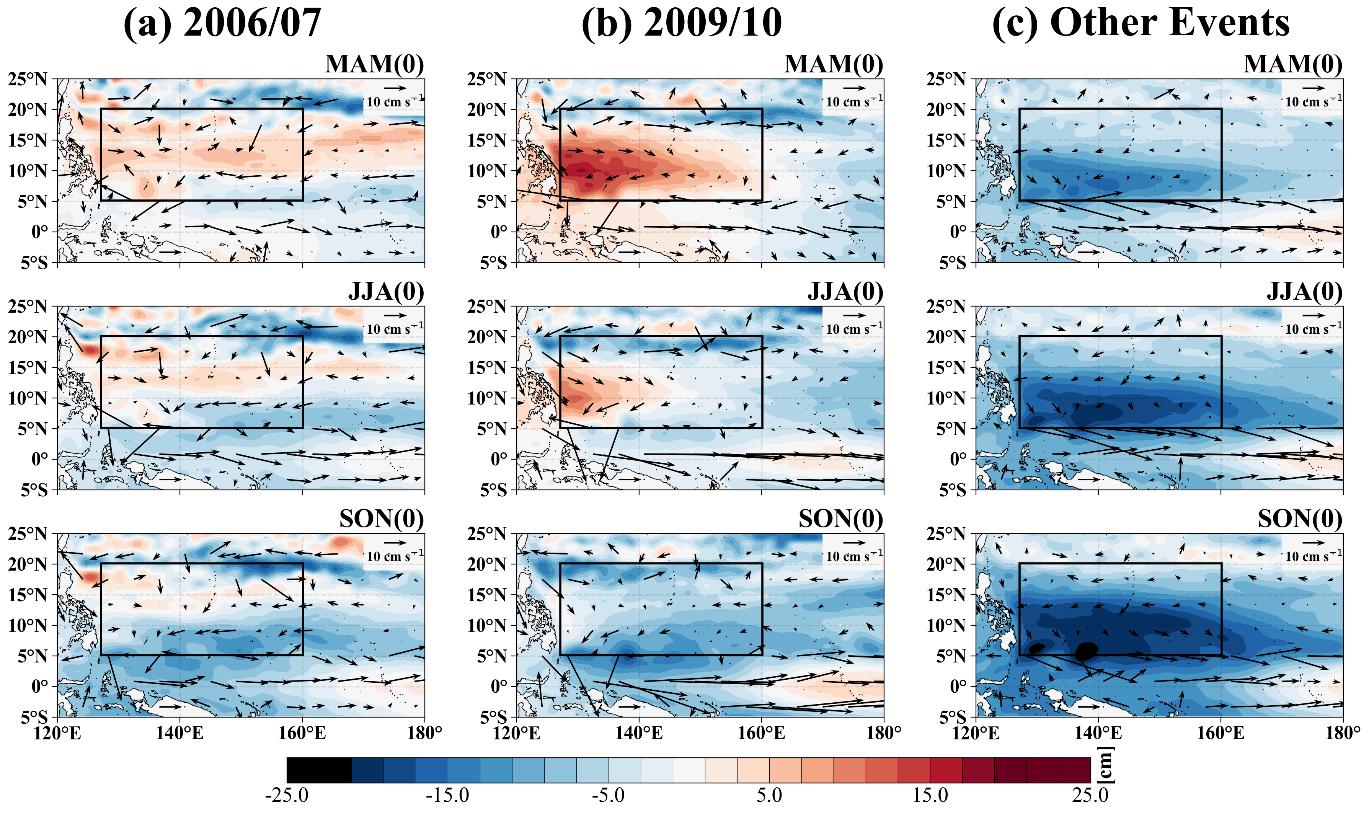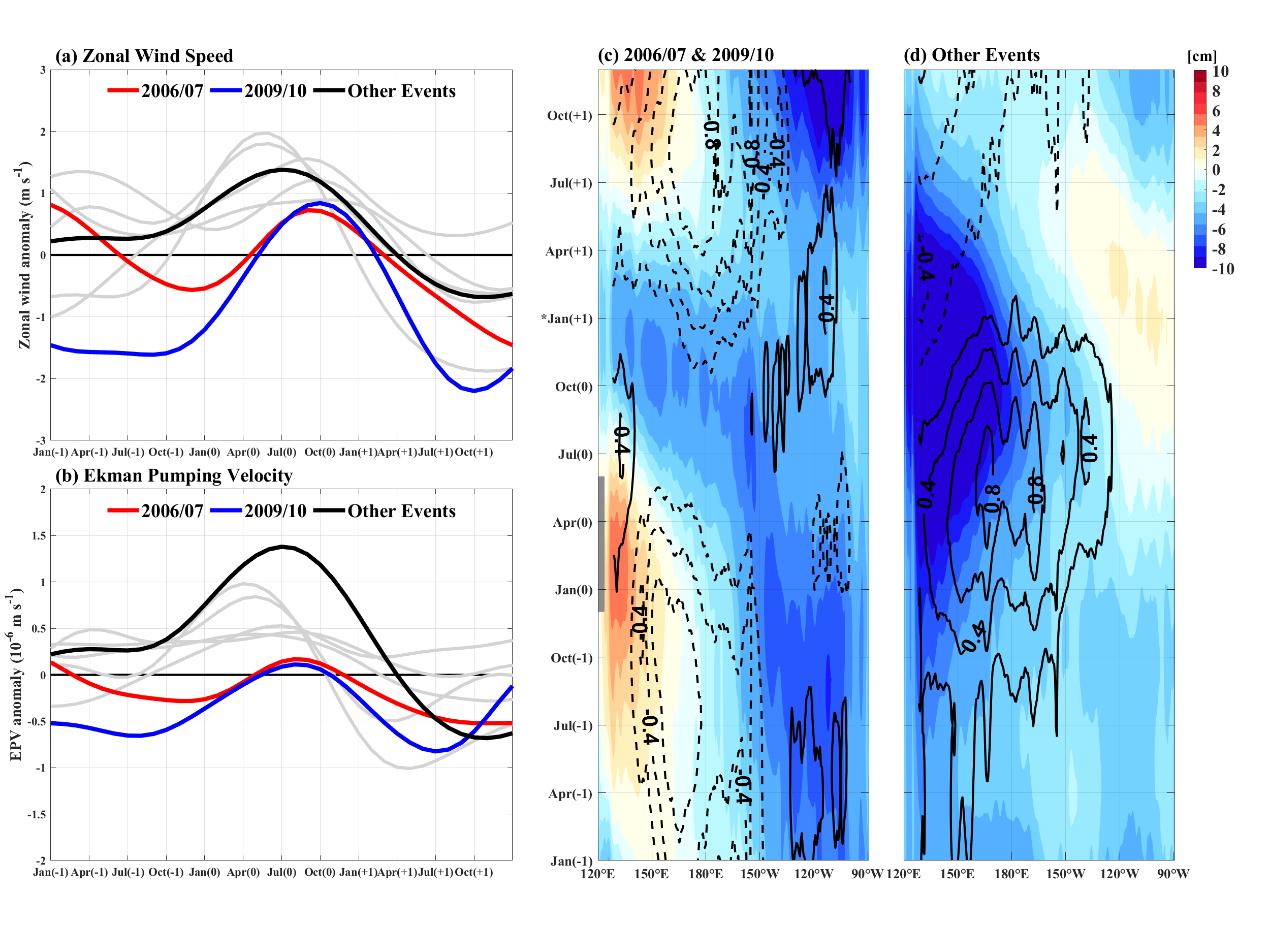The Philippine Sea (PS) is one of the regions with the strongest interannual variability in sea level and upper-layer circulation, with notable impacts on downstream circulations and local ecosystems. During the developing stage of El Nino events, the PS shows sea level falling and cyclonic circulation anomaly. However, El Nino is subjected to complexity, causing diverse PS responses across individual events.
Recently, the research team led by Prof. WANG Fan from the Institute of Oceanology of the Chinese Academy of Sciences (IOCAS) revealed the mechanism behind the special variations of sea level and circulation in the PS during 2006 and 2009 El Nino events.
The study was published in Journal of Geophysical Research: Oceans on Jun. 03.
Researchers investigated the exceptional positive sea-level anomalies (SLAs) and anticyclonic circulation anomalies in the boreal spring and summer of 2006 and 2009 by synthesizing observational and reanalysis data sets. They also found exceptional changes in downstream regions, such as the southward shifted North Equatorial Current (NEC) bifurcation, the enhanced Mindanao Current (MC) intrusion into the Sulawesi Sea, and the increased the Indonesian throughflow (ITF) transport in the Makassar Strait.
The persistent and strong equatorial easterly winds of the winter preceding 2006 and 2009 El Nino may be a major contributor to these changes. Sensitivity experiments from a simplified ocean model further suggest that the winds from March to February of the preceding year are most critical. Specifically, the negative wind stress curl in the western and central North Pacific played a dominant role, and the equatorial winds played a secondary role.
"The former La Nina builds up the background state of special SLAs, and a late-onset El Nino is favorable for the special variations of such special changes in the PS," said LI Rui, first author of the study.
"Our findings help understand the sea level and circulation changes in tropical western Pacific under El Nino-Southern Oscillation (ENSO) complexity, and will contribute to regional climate prediction and adaptation efforts," said Prof. WANG, the corresponding author.
This work was supported by the National Natural Science Foundation of China, the Strategic Priority Research Program of Chinese Academy of Sciences, the Shandong Provincial Natural Science Foundation, etc.

Fig. 1 Composite sea level anomalies and surface currents in MAM(0), JJA(0), and SON(0) for (a) 2006/2007 El Nino, (b) 2009/2010 El Nino, and (c) five other El Nino events.

Fig. 2 (a) Zonal wind anomalies in the western equatorial Pacific (125°E-180°E, 5°S-5°N) and (b) Ekman pumping velocity anomalies in the northwestern Tropical Pacific (125°E-180°E, 5°N20°N) during El Nino events. (c, d) Time-longitude plots of the composite sea-level anomalies and EPV anomalies averaged over the 5°N-20°N band.
Li, R., Wang, F*., Li, Y., Ren, Q., & Lyu, Y. (2023). Special sea-level and circulation anomalies in the Philippine Sea during the 2006/2007 and 2009/2010 El Nino events. Journal of Geophysical Research: Oceans, 128, e2022JC019537.
(Text by LI Rui)
Media Contact:
ZHANG Yiyi
Institute of Oceanology
E-mail: zhangyiyi@qdio.ac.cn
(Editor: ZHANG Yiyi)

